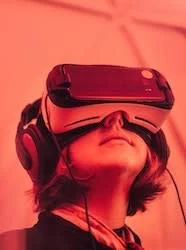As Virtual reality (VR) becomes more accessible, it has infiltrated most industries that are trying to use the newest technology to innovate their business practices. There are many instances in which experiencing a situation virtually offers many benefits, especially when attempting to prepare for high risk situations. This has made VR a highly beneficial technology for emergency responders, who get to experience intense situations through simulation, which can be one more way to prepare for the unpredictable.
VR in emergency response
Emergency Response Training Emergency responders
receive extensive training to prepare for emergency situations, which includes
life-saving medical techniques as well as judgement training. Emergency response training coordinators are responsible for teaching emergency
responders the tools they need in a potential emergency. The tools provided to
trainees have the potential to save lives in future circumstances, and
therefore, the trainer must be well prepared with exercises for the training to
be efficient and useful. Emergency response training is necessary for
responders but it’s also a training that benefits anyone who takes part in it.
According to the Head of e-Health at Health Data and Information Analysis, Dubai Health Authority, Osama Elhassan, “Due to the immense need to
increase efficiency and improve both service quality and patient safety,
digital transformation of the healthcare system has become an imperative and
not an option.”
In emergencies, having someone present who is familiar with the situation can drastically reduce damage and risk to employees, which makes VR a certain part of the future. This is especially true given the healthcare industry’s slow transition into innovative technologies. Although there are new tools and softwares being released regularly that could help facilitate the work processes of the medical industry, time and cost are factors that prevent hospitals from adopting technology like VR. While there are life-saving benefits to the extra training, perspective and preparation that VR provides, its integration into the healthcare industry is slow due to being seen as an unnecessary luxury.
You might also like:
Virtual reality clinic: a case study
VR use
VR is now being used by the U.S. Department of Homeland Security, as well as various branches of government, such as the New York City Office of Emergency Management and the Los Angeles Police Department. Virtual reality in disaster response training helps officials train rescuers and challenges decision-making abilities for those who will find them in critical situations as part of their workday. This can also serve as an indicator for trainers of how they may react in a real-life situation and whether or not they’ll be able to handle the pressure. In any kind of emergency or disaster, the priority is to ensure the safety of everyone at risk. However, any disaster has the potential to cause a lot of physical damage to a business, but natural disasters can destroy business files which may be detrimental to the company’s future. Depending on the type of data storage used by a company, a fire could wipe out all of the information necessary to function, which could make it more difficult to get back on track even after the standard obstacles of a major disaster.
Disaster recovery plans
To avoid having to worry about the future of a business while also worrying about people’s lives, it’s important to consider developing a business continuity or disaster recovery plan in order to be prepared. This can provide the comfort that the business will survive a disaster. Another modern technology that can help protect information is the cloud, which is one of the most effective ways to keep files safe in case of a fire or natural disaster. Having important company information, or even all company information stored on the cloud will help protect them from any physical disaster, although it’s important to also be aware of cyber attacks. VR is the technology of the future that is slowly but surely finding its home in every industry and aspect of life. It possesses the extremely useful quality of allowing people to see virtual worlds that can help them develop skills they need. In emergency training scenarios, VR allows trainees to get a feel for urgent situations, which can introduce them to obstacles or potential problems they wouldn’t have considered prior to that — and that may be just the right amount of insight to get them through a dangerous situation in the future.
Brooklyn Faulkner writes
out of her home in the Pacific Northwest. She is greatly interested in
technology's potential to improve the lives of individuals and society in
general. You can see more of her writing on twitter, @faulknercreek
Image credit:Photo by Samuel Zeller on Unsplash







